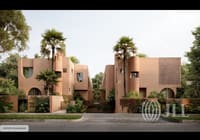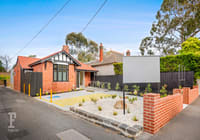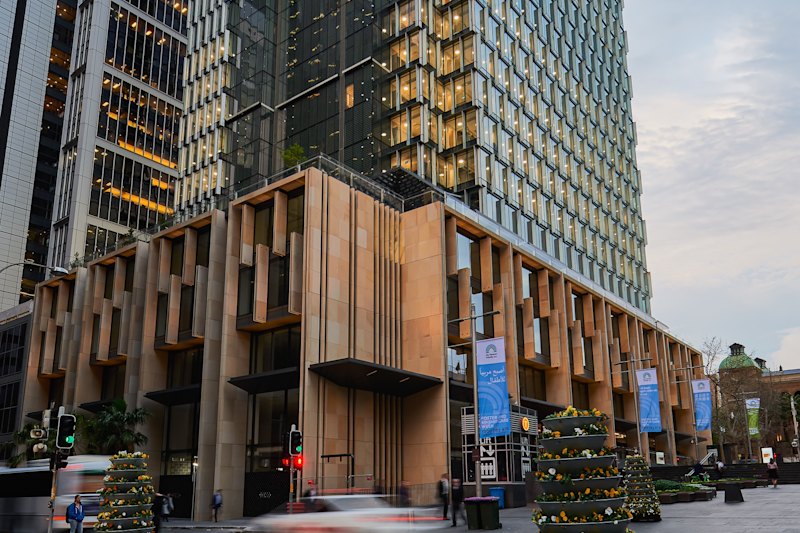
Old brewery building in Sydney nominated for world architecture award
Demonstrating how possible it is to pull an architectural silk purse out of a semi-ruinous industrial sow’s ear, the re-purposed CUB Brewery in Chippendale’s $2 billion Central Park development is up for its fifth major award this week.
This time, The Brewery Yard, which features a funky silver mesh roofscape and funnels atop the detailed fabric of an old Victorian brick beer factory, is in the running for the World Architecture Festival Award, in the new and old category.
Being held from November 16-18 in Berlin, the festival is the globe’s largest architectural gathering.
If Sydney’s architecture firm Tzannes wins from the 17 shortlisted candidates, Alec Tzannes said he would be delighted. “Of course”.
But more-so, it could be “a good thing to show how heritage adaption does not have to be so narrow, unobtrusive and conservative. Nor so difficult.”
If The Brewery Yard – an actual working part of the new residential/retail/hotel/public space and parkland precinct – does score, “a major award like this could be really important to allow the argument to surface that you can do bold things with old buildings because ‘heritage’ has sometimes lost its capacity to re-imagine”, he said.
“Doing old and new architecture together is a very exciting thing.
“And like turning a beer-making factory into an energy-making factory, the Brewery shows that when a building can take it, bold new structure can work in context.”
 The Brewery Yard is in the running for a World Architecture Festival Award. Photo: John Gollings
The Brewery Yard is in the running for a World Architecture Festival Award. Photo: John Gollings
At this stage, with two other globally-important 2016 awards to top up last year’s NSW AIA and the National AIA Lachlan Macquarie awards for heritage, Tzannes and co-director on the project, Ben Green, already feel like winners.
Mr Tzannes said gaining UNESCO’s Asia Pacific Award for Cultural Heritage Conservation in September was pretty special as it was such “an uncommercial” prize.
UNESCO returned the compliment, appreciating how The Brewery Yard stood as “a prototype for repurposing industrial heritage in a sustainable, forward-looking manner”.
 The former brewery is now a ‘tri-generation’ plant at Central Park. Photo: John Gollings
The former brewery is now a ‘tri-generation’ plant at Central Park. Photo: John Gollings
The other global gong, the Chicago Athenaeum International Architecture Award that culled through 370 global submissions, was up there too, Mr Tzannes said.
But best of all, he said, was the very fact that his firm – who with Sydney’s Cox Architecture created the first urban renewal master-plan for the 5.8-acre site way back in 2003 – wound up with the job of repurposing the big red-brick beer joint.
Central Park is already sitting on a pile of awards (28 at last count) and a dazzling list of international “starchitects” have their names on the buildings. Jean Nouvel’s incredibly original, novel and vertically verdant residential structure, One Central Park, garnered the 2014 nod as “Best Tall Building in the World”.
 The building was called ”memorable” by UNESCO. Photo: Brett Broadman
The building was called ”memorable” by UNESCO. Photo: Brett Broadman
Yet for Mr Tzannes, gaining the commission for Brewery Yard was the jewel in the crown: “The best project on the site because the tri-generator (the building reworked as the power source and the hot and cold water generator), was an exciting technical project that could also be so beautiful and culturally interesting. True old and new.”
The retained chimney still works to vent the steam created during the on-site manufacture of energy. “But the way the light falls on the top if the building, that silver mesh… that is strangely, wonderfully illusionary…” Mr Tzannes said.
UNESCO thought it beautiful and relevant too: The Brewery Yard has become “memorable”, said the citation. “The Tri-Gen plant has become an expressive new element…with the form derived from the integration of the existing roofline and the geometric forms of the plant’s equipment.”
It remains to be seen whether the World Architecture Festival folks will be the next to add their opinion to the glowing, growing litany of accolades.
www.worldarchitecturefestival.com/new-and-old-completed-buildings










